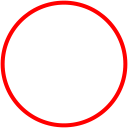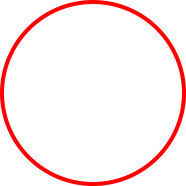Shapes are more than geometric forms; they’re visual cues that communicate emotions, personality, and values. In logo design, the choice of shapes goes beyond aesthetics—it taps into the psychology of perception. From circles to triangles, each shape carries its own connotations and evokes specific feelings. In this article, we delve into the profound impact of shapes in logo design and how they influence audience perception.
Circles: Unity and Wholeness
Circles are a symbol of unity, wholeness, and continuity. They evoke a sense of inclusion and community. Brands that want to communicate openness, harmony, and approachability often incorporate circular shapes in their logos. A circular logo can create a sense of trust, inviting audiences to feel a part of something cohesive and complete.
Triangles: Dynamic Energy
Triangles are inherently dynamic shapes that convey movement and energy. Depending on their orientation, triangles can represent stability and balance or action and progression. Brands seeking to convey innovation, growth, or change might opt for triangular elements in their logos. The upward-pointing triangle symbolizes aspiration, while the downward-pointing triangle suggests stability.
Squares and Rectangles: Order and Reliability
Squares and rectangles are symbols of stability, order, and reliability. Their balanced and structured nature evokes a sense of trustworthiness. Brands that aim to communicate professionalism, security, and solid foundations often incorporate square or rectangular shapes in their logos. These shapes offer a visual anchor that assures audiences of the brand’s steadfastness.
Curves and Spirals: Fluidity and Creativity
Curves and spirals introduce a sense of fluidity and movement. They are often associated with creativity, flexibility, and imagination. Brands that want to convey innovation or free thinking might use curved lines to evoke a sense of openness and adaptability. Spirals, with their graceful form, can suggest growth and expansion.
Geometric vs. Organic Shapes
Geometric shapes, with their precise angles and symmetrical proportions, convey order and control. They are often associated with technology, professionalism, and modernity. Organic shapes, on the other hand, mimic forms found in nature and evoke feelings of comfort and approachability. The choice between geometric and organic shapes depends on the brand’s identity and the emotions it aims to evoke.
Negative Space and Illusions
Shape psychology also extends to negative space—the empty areas within and around shapes. Clever use of negative space can create hidden meanings or illusions that engage the viewer’s imagination. The FedEx logo, for example, uses negative space to hide an arrow, symbolizing speed and precision in their delivery service.
Cultural and Contextual Influence
The psychological impact of shapes can vary based on cultural and contextual factors. For instance, while a circle might symbolize unity in one culture, it could signify infinity in another. The meanings associated with shapes can also change based on their context within a logo. Designers must consider these nuances to ensure that the intended message is communicated accurately.
Color and Shape Fusion
Color and shape are closely intertwined in logo design. The psychology of shapes can be enhanced or modified by color choices. For example, a red circle might evoke a different emotional response than a blue circle. The synergy between color and shape adds depth to a logo’s message.
Subliminal Influence on Perception
Shapes exert a subliminal influence on how logos are perceived. Viewers often react to shapes instinctively before consciously processing the details. This primal response can shape the initial impression of a brand, making the choice of shapes a critical aspect of logo design.
Conclusion: Shaping Brand Perception
In logo design, shapes are potent tools that shape brand perception. Each curve, angle, and line carries meaning and evokes emotions that resonate with audiences on a subconscious level. By understanding the psychology of shapes, designers craft logos that not only visually captivate but also emotionally connect, fostering a lasting bond between brand and audience.


